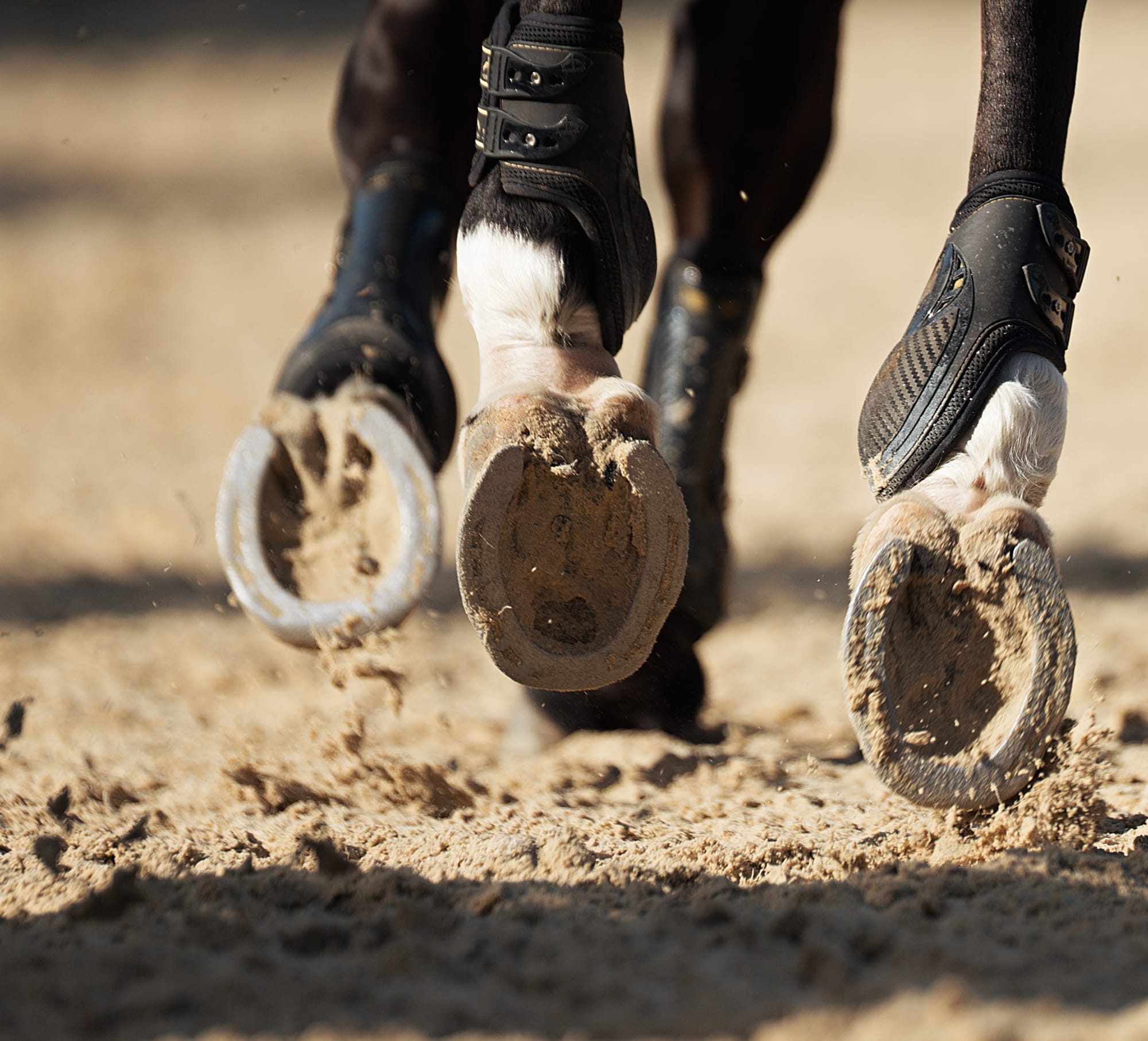Your horse’s hooves are fundamental to its health, wellbeing and performance. Poor hoof health can lead to lameness, long-term damage and, in severe cases, can even shorten a horse’s life. Understanding the structure of the hoof and how to maintain its health is vital for every horse owner.
Understanding the Hoof Structure
The horse’s hoof is a complex and fascinating structure made of keratin, the same protein found in human nails. Key parts of the hoof include:
- Hoof Wall: The outer layer that provides protection and supports weight.

- Sole: The underside of the hoof, which protects the inner structures.

- Frog: The triangular structure in the center of the hoof, essential for shock absorption and blood circulation.

- Heel: The back portion of the hoof that provides stability and support.

Together, these components ensure proper shock absorption, support, and movement. When cared for properly, the hoof can withstand significant wear and tear while maintaining the horse’s comfort and performance.
Tips for Maintaining Healthy Hooves
1. Regular Farrier Visits
Routine farrier care is the cornerstone of good hoof health. Depending on your horse’s needs, this may include:
- Trimming: Horses typically require trimming every 4-8 weeks to maintain balance, prevent overgrowth, and avoid deformities. The frequency depends on factors like whether the horse is barefoot, shod, or has a specific hoof condition.
- Shoeing: Some horses benefit from shoes for added protection, especially those working on hard or abrasive surfaces.
2. Cleaning and Daily Checks
- Clean Hooves Daily: Removing dirt, mud and debris improves airflow and reduces the risk of infections such as thrush. Keeping hooves dry also prevents weakening of the hoof wall.
- Monitor Appearance: Daily cleaning is an opportunity to inspect the hooves for any signs of injury, cracks, or infection. Early detection is key to addressing issues before they escalate.
3. Using Overreach Boots
Overreach boots can protect horses from pulling off their shoes, which can cause damage to the hoof. This is particularly important for shod horses, as losing a shoe can leave nails in the hoof or tear off parts of the hoof wall, increasing the risk of injury.
4. Keeping the Environment Clean and Safe
- Manage Mud and Moisture: Wet, muddy paddocks increase the risk of infections and weaken the hooves. Conversely, excessively dry and hard conditions can cause hooves to become brittle and crack.
- Stable Management: Provide a clean, dry environment and appropriate turnout options to minimize environmental hoof damage.
5. Balanced Nutrition and Supplements
- Proper Diet: A diet rich in nutrients like biotin, zinc and amino acids is essential for healthy hoof growth.
- Supplements: These can be beneficial for horses with recurring hoof problems or poor hoof health. Consult your veterinarian or equine nutritionist to determine the best diet and supplement regimen for your horse.
Common Hoof Issues to Watch For
- Thrush: A bacterial infection in the frog, causing a foul odor and soft, black tissue.
- Laminitis: Inflammation of the hoof’s laminae, often linked to metabolic issues or diet.
- Abscesses: Infections under the hoof that cause pain and lameness.
- White Line Disease: A fungal infection in the area where the hoof wall meets the sole.
- Bruising: Caused by stepping on hard objects, leading to discomfort and sensitivity.
Regular inspections and prompt treatment can help prevent these issues from worsening.
Importance of Movement and Training
Consistent movement is essential for hoof health, as it stimulates blood flow and promotes strength and growth. Horses that spend time on soft surfaces, such as grass paddocks, may not need shoes, while those working on hard or rough terrain may require additional protection.
Seasonal Hoof Care
Hoof care needs can change with the seasons:
- Spring and Summer: Hooves tend to grow faster, requiring more frequent trims. Laminitis risk increases with the abundance of spring grass, so extra vigilance is necessary.
- Fall and Winter: Cold weather can make hooves brittle, while wet conditions increase the risk of infections like thrush. Adjust care routines accordingly to maintain hoof health year-round.
Good hoof care is not just about aesthetics; it’s a vital part of maintaining your horse’s health and happiness. With regular farrier visits, daily cleaning, proper nutrition and attentive management, you can ensure your horse’s hooves remain strong, healthy and ready to support them for years to come.
